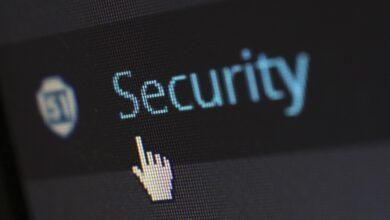Fortify Your Crypto – Conducting a Security Audit

In the rapidly evolving world of cryptocurrencies, where fortunes can be made or lost in the blink of an eye, the importance of conducting a thorough security audit on your investments cannot be overstated. The landscape of digital assets is fraught with risks, from hacking incidents to regulatory changes, making it imperative for investors to remain vigilant. A meticulous assessment of your cryptocurrency portfolio is not merely a best practice; it is an essential task that can safeguard your financial future.
Performing a security review of your crypto investments involves a systematic approach to identifying vulnerabilities and fortifying defenses. It requires a keen understanding of the various types of risks associated with digital assets, as well as an appreciation for the nuances of blockchain technology. By executing a comprehensive audit, you are essentially carrying out a risk evaluation that will illuminate potential threats and allow you to make informed decisions regarding your investment strategy.
This article aims to guide you through the intricacies of assessing the security of your cryptocurrency holdings. We will explore the methodologies for conducting an effective audit, highlighting key areas that warrant attention. From scrutinizing wallet security practices to evaluating exchange protocols, every detail counts in ensuring that your investments are not only fruitful but also secure. In this age of digital finance, armoring yourself with knowledge is the first step towards achieving peace of mind in your crypto endeavors.
How to Conduct a Security Audit on Your Crypto Investments
In an era where cryptocurrency investments have become increasingly popular, the necessity for a thorough security audit of your portfolio cannot be overstated. Executing a security review involves a systematic assessment of the various assets within your cryptocurrency holdings. This process is essential not just for safeguarding your investments but also for identifying potential vulnerabilities that could jeopardize your financial health. By carrying out a meticulous evaluation, you can ensure that your crypto assets are not only secure but also optimized for performance.
To begin with, understanding the specific risks associated with cryptocurrency is paramount. Unlike traditional investments, the digital nature of cryptocurrencies exposes them to unique threats such as hacking, phishing attacks, and even regulatory changes. A risk evaluation should focus on these aspects, assessing how they might affect your portfolio. For instance, consider the security measures implemented by exchanges where you hold your assets; a lack of two-factor authentication or cold storage options may signal potential weaknesses.
Once you have identified the risks, it is time to perform an in-depth audit of your investment strategies and asset management practices. This involves reviewing each cryptocurrency holding in your portfolio to determine its security posture. Are you utilizing hardware wallets for long-term storage? Have you enabled all available security features offered by your chosen platforms? Each of these factors plays a significant role in fortifying your defenses against potential threats.
Moreover, executing regular audits is crucial for maintaining the integrity of your investments over time. The cryptocurrency landscape is continuously evolving, with new threats emerging regularly. Therefore, carrying out periodic assessments will allow you to adapt to these changes and reinforce your security measures accordingly. This dynamic approach helps ensure that your portfolio remains resilient against both known and unknown risks.
Another critical component of a security audit is understanding the importance of diversification within your crypto assets. By spreading investments across multiple cryptocurrencies and platforms, you can mitigate risks associated with any single point of failure. A comprehensive review should not only focus on individual asset security but also consider how the overall structure of your portfolio contributes to or detracts from its safety.
In conclusion, conducting a thorough security audit of your cryptocurrency investments is not merely a best practice; it is an essential strategy for safeguarding your financial future. By performing regular evaluations and adapting to emerging threats, you can enhance the resilience of your portfolio. Remember that proactive measures–such as adopting robust security protocols and diversifying your investments–are key to securing your crypto assets against the ever-present risks inherent in this volatile market.
Understanding Crypto Investment Risks
In the burgeoning landscape of digital currencies, understanding the risks associated with your cryptocurrency investments is paramount. The volatility of crypto assets can lead to significant financial gains, yet it equally opens the door to considerable losses. Thus, performing a thorough risk evaluation for your portfolio is not merely advisable; it is essential. Each investment carries its unique set of vulnerabilities, from market fluctuations to regulatory changes, and recognizing these factors can aid in safeguarding your assets.
Executing a security review of your cryptocurrency holdings begins with a comprehensive inventory of all assets within your portfolio. This includes not only popular currencies like Bitcoin and Ethereum but also lesser-known altcoins that may harbor greater risks. Carrying out this assessment requires an understanding of the underlying technology and market sentiment surrounding each asset, as these elements heavily influence their stability and potential for growth. Moreover, keeping abreast of news related to security breaches or technological advancements can provide insights into the evolving risk landscape.
In addition to inventory management, it is crucial to evaluate the security measures you have in place for storing your cryptocurrencies. Whether utilizing hardware wallets, software wallets, or exchanges, each method presents different levels of risk. Performing an assessment of these storage solutions involves scrutinizing their security features, including two-factor authentication, encryption protocols, and insurance policies against hacks. By carefully reviewing these aspects, you can enhance the safety of your investments while minimizing exposure to potential threats.
Carrying out a risk evaluation must also take into account the psychological factors that influence investment behavior. The fear of missing out (FOMO) can lead investors to make hasty decisions without fully understanding the implications. Executing a disciplined approach toward your cryptocurrency investments means establishing clear parameters for when to buy or sell based on data-driven analysis rather than emotional reactions. This strategy fosters a more resilient portfolio capable of weathering the inevitable market fluctuations.
Moreover, it is prudent to engage in periodic reviews of your investment strategies and asset allocations. The crypto market is notoriously fickle; what may have been a sound investment last year could quickly turn sour due to shifting trends or external pressures. Therefore, performing regular assessments allows you to adjust your portfolio in alignment with current market conditions and personal financial goals. Such adaptability is crucial for long-term success in this ever-evolving field.
Ultimately, conducting a thorough security assessment of your cryptocurrency investments empowers you to navigate the complexities of this digital frontier with greater confidence. By understanding the inherent risks and executing detailed evaluations of both your assets and storage methods, you position yourself to make informed decisions that align with your financial aspirations. In an arena where knowledge is as valuable as capital itself, arming yourself with information becomes the cornerstone of safeguarding your investments against unforeseen challenges.
Essential Tools for Security Audits
Conducting a security audit of your cryptocurrency investments is no trivial task; it demands precision and expertise. Essential tools for this endeavor range from comprehensive portfolio management software to specialized blockchain analysis platforms. These instruments not only assist in tracking the performance of your assets but also provide crucial insights into the underlying security protocols of the cryptocurrencies you hold. By employing these tools, investors can enhance their understanding of potential vulnerabilities within their portfolios and make informed decisions about risk management.
Executing a security review of your cryptocurrency portfolio involves a systematic approach that includes evaluating the security measures you have in place. This review should encompass an assessment of your storage methods–whether you’re using hardware wallets, software wallets, or exchanges. Each method comes with its own set of risks and benefits, and understanding these nuances is vital for securing your investments. Furthermore, regularly updating your security practices and staying informed about emerging threats can significantly mitigate risks associated with your crypto assets.
Performing a comprehensive crypto investment security assessment not only identifies existing vulnerabilities but also helps in developing a proactive strategy for safeguarding your investments. This process may include conducting penetration tests on your own systems, analyzing transaction histories for suspicious activity, and ensuring that all digital wallets are equipped with robust authentication measures. By adopting a holistic view of your investment landscape, you create a resilient framework that protects against potential breaches or losses.
Carrying out a thorough risk evaluation for crypto assets is essential for any serious investor. This evaluation should involve an analysis of market conditions, regulatory changes, and technological advancements that may affect the value or security of your holdings. By continuously monitoring these factors and adjusting your strategies accordingly, you can maintain a strong position in the ever-evolving world of cryptocurrency. In essence, a diligent approach to risk assessment not only safeguards your current investments but also positions you favorably for future opportunities in this dynamic market.
Steps to Perform Security Assessments of Crypto Investments
In the realm of cryptocurrency, where the landscape is both exciting and fraught with peril, conducting a thorough security assessment of your investments is not merely prudent; it is essential. The first step in this intricate process involves a meticulous evaluation of your cryptocurrency portfolio. This evaluation should encompass both the digital assets you hold and the platforms through which you transact. A comprehensive understanding of these elements will lay the groundwork for a robust security audit that can identify potential vulnerabilities in your investment strategy.
Carrying out a risk evaluation for crypto assets requires a multi-faceted approach. Begin by examining the specific risks associated with each asset in your portfolio. Factors such as market volatility, regulatory changes, and technological developments can significantly impact the security of your investments. By categorizing these risks into manageable segments–such as operational, financial, and reputational–you can better understand how they intertwine and affect the overall stability of your portfolio.
Executing a security review involves scrutinizing not only your assets but also the security practices employed by exchanges and wallets holding your cryptocurrencies. Assess whether these platforms utilize strong encryption methods, two-factor authentication, and regular security audits. It is imperative to ask critical questions: Are there known vulnerabilities within these systems? How frequently do they update their software to fend off emerging threats? Such inquiries will provide clarity on whether your digital assets are safeguarded against potential breaches.
Performing a crypto investment security assessment also entails evaluating your personal security hygiene. This includes assessing the strength of passwords, the use of hardware wallets versus online storage solutions, and overall awareness of phishing schemes and social engineering attacks. Your diligence in maintaining secure practices contributes significantly to mitigating risks associated with unauthorized access to your cryptocurrency holdings.
In addition to individual practices, it is essential to keep abreast of broader industry trends that may influence the security landscape of cryptocurrency investments. Stay informed about recent hacks or vulnerabilities reported by trusted sources. Engaging with community forums or subscribing to reputable news outlets dedicated to blockchain technology can enhance your understanding of emerging threats and best practices for securing your assets.
Finally, consider establishing a routine for periodic reviews of your portfolio’s security posture. The dynamic nature of the cryptocurrency market necessitates ongoing vigilance–what might be secure today could become vulnerable tomorrow. By adopting a proactive stance towards conducting regular audits and assessments, you ensure that your investments remain resilient against the myriad threats that characterize this digital frontier. Thus, through systematic evaluation and continuous improvement of security measures, you can fortify your cryptocurrency portfolio against potential risks while maximizing its potential for growth.
Conclusion: Ensuring the Security of Your Cryptocurrency Investments
In the ever-evolving landscape of cryptocurrency, where opportunities and risks coexist in an intricate dance, the necessity for vigilance cannot be overstated. As investors, our journey through this digital realm demands not only passion but also a robust strategy for safeguarding our assets. By executing a meticulous security review of your cryptocurrency portfolio, you are not merely protecting your investments; you are embracing a proactive stance that is fundamental to thriving in this volatile market.
The process of carrying out a comprehensive risk evaluation for crypto assets involves understanding the unique vulnerabilities inherent in each investment. From scrutinizing the security measures of wallets to assessing the reliability of exchanges, every detail matters. It is essential to perform thorough assessments regularly, adapting your strategies as new threats emerge and as the market landscape shifts.
Best Practices for Continuous Security
To encapsulate the best practices for ensuring the security of your cryptocurrency investments:
- Establish a Routine: Regularly perform security reviews and assessments of your portfolio to identify any potential risks.
- Diversify Your Assets: Spread your investments across various cryptocurrencies and platforms to mitigate risk.
- Utilize Secure Wallets: Choose hardware wallets or reputable software wallets known for their security features.
- Stay Informed: Keep abreast of the latest security threats and updates from credible sources within the crypto community.
- Employ Two-Factor Authentication: Always activate 2FA on your accounts to add an extra layer of protection.
In conclusion, performing these essential evaluations and reviews sets the foundation for not only preserving your assets but also for cultivating a resilient investment strategy. By remaining vigilant and adopting these practices with care, you pave the way for a secure journey through the fascinating world of cryptocurrency–one where informed decisions lead to rewarding outcomes. Let us embrace this endeavor with both caution and enthusiasm, ensuring that our investments flourish in a secure environment.





